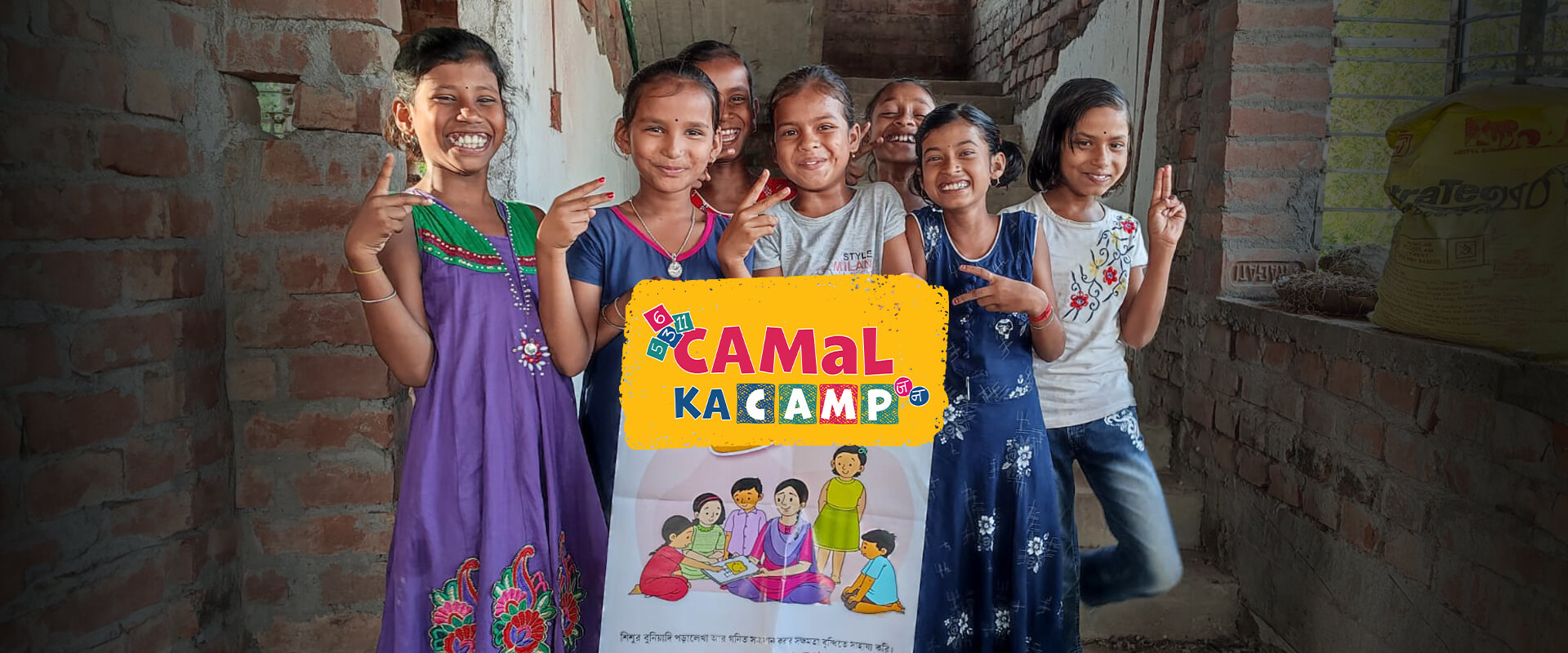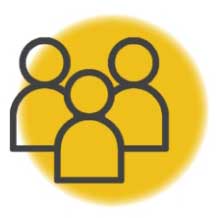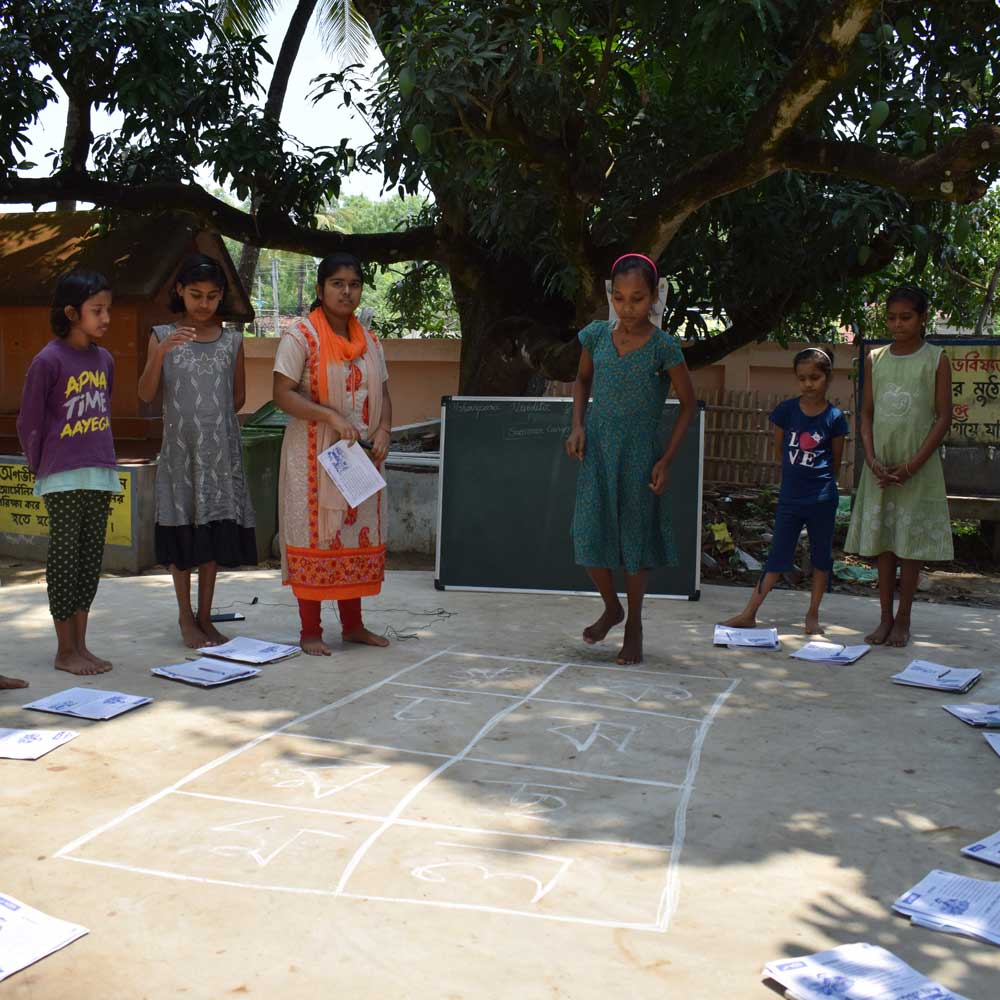
What is CAMaL Ka Camp?
A Summer Catch-Up Camp for Children
Annual Status of Education Report (ASER) 2022 data shows that only 42.8% of Grade V children can read text at Grade II level. This figure was 50.4% in 2018.
School enrollment of children in the 6-14 age group has progressively increased over the years. It reached 96% in 2010 and remained that way till the pandemic. While the problem of “every child in school” has been largely solved, the goal of “every child learning well” is still far from being achieved.
Even before the COVID-19 pandemic, ASER data showed that children's ability to read or do basic arithmetic needed substantial strengthening in India. Moreover, the pandemic exacerbated this issue, as prolonged school closures and economic disruptions in families led to major learning gaps among children (ASER 2022 data).
The summer of 2023 presented an invaluable opportunity to address the issue of learning gaps and help children before the next school year began. CAMaL ka Camp 2023 (CAMaL: Combined Activities for Maximized Learning) focussed on students in Grade V transitioning to Grade VI in the academic year 2023-24, as well as students in Grades IV and VI.

During the six-week camp, children were engaged in various learning activities to enable them to participate and communicate effectively.
What did we do?
In the summer of 2023 (May-June), Pratham facilitated catch-up camps for children transitioning from primary to the middle school through youth volunteers and government support. The goal was that all children who participated in the six-week camp would be able to read fluently with understanding and that they should be able to express their thoughts orally and in writing by the end of the camp.
Implemented across the states of Bihar, Madhya Pradesh, and Uttar Pradesh, the summer camps witnessed overwhelming response, thanks to the concerted efforts of over 300,000 dedicated volunteers, predominantly youth aged 16 to 20, studying in Grade XI-XII.
Learning was made engaging through various activities. A warm-up involved simple learning games. Storytelling and discussions followed, leading to writing activities. Focus later shifted to letters and words with games like Bara-khadi. Each child created a comprehensive dictionary with words, meanings, sentences, and pictures. Math word problems concluded the class.

Campaign Ran For 6 Weeks
Week 1
Warm-up activities with children and a baseline assessment to evaluate the current learning levels.
Week 2
Followed by four weeks of instructional activities to teach and track children's progress.
Week 3
Final week showcased the results of
their progress
Reached 3.48 million children (Grades IV-V-VI)
Implemented Across
Bihar, Madhya Pradesh and Uttar Pradesh

districts of Bihar, Madhya Pradesh, and Uttar Pradesh

blocks

communities and villages covered
Highlights of 2023 Summer Camp
Government Collaboration
The formal support from the Education Departments of the Governments of Madhya Pradesh and Bihar, as well as the continuous support received at the district and sub-district levels in Uttar Pradesh, played a pivotal role in ensuring the smooth execution of the summer camps.
Training and Technology
Every volunteer underwent short yet comprehensive training, equipped with a detailed manual outlining all the activities to be conducted, including resources such as para and story cards and QR codes to access short activity videos. Additionally, they were provided with Hindi language tools and data collection formats. To streamline the process, we employed a user-friendly weblink for volunteer registration, profile updates, and assessment data submission.
Monitoring and Evaluation
To maintain quality and accountability, our dedicated teams from Pratham and government personnel conducted regular on-site visits and telephonic calls to assess progress and verify assessment data submitted by volunteers. This meticulous oversight ensured the credibility and reliability of our outcomes.

Outcomes and Impact
The results have been nothing short of extraordinary. Each of the three states witnessed at least a 24-percentage point improvement in children's ability to read a Grade II level text after only four weeks of instructional activities. The impact has been far-reaching, sparking the need to build from here and ensure a brighter future for these young children.






